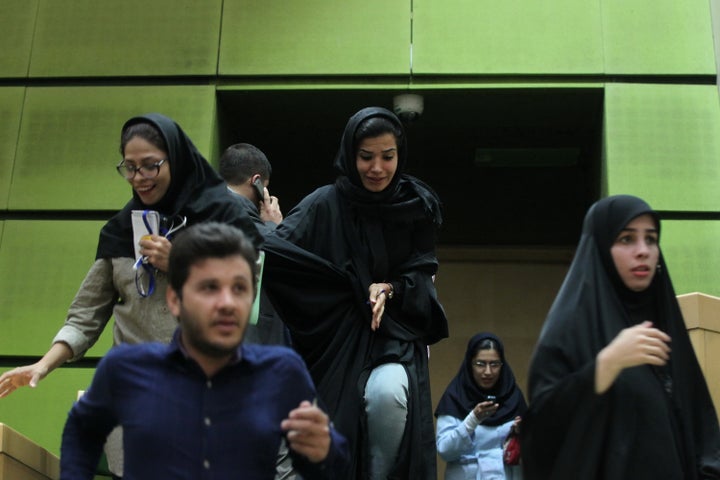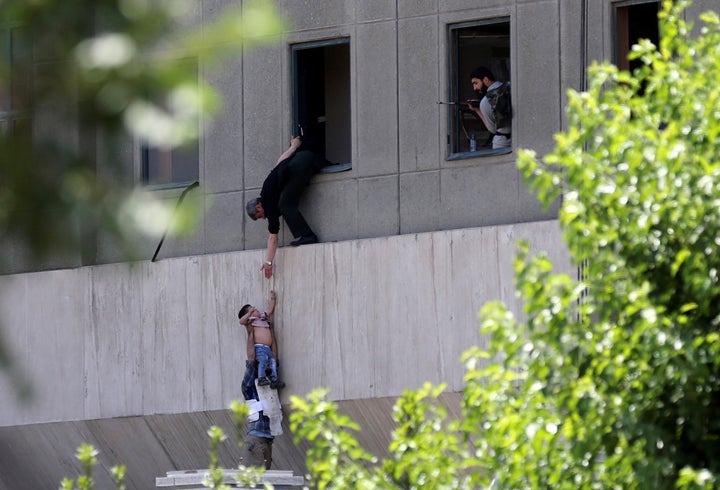After deadly terror incidents this week in London and Melbourne, a familiar pattern of events began to unfold online. First, there was a flurry of activity from pro-Islamic State militant groups’ accounts on encrypted messaging apps like Telegram. Then, hours later, the Islamic State claimed credit for the violence in a message via its news agency.
Something similar happened after last month’s suicide bombing in Manchester, England, the killings at Westminster Bridge before that ― and in many of the other attacks ISIS has professed to be behind.
Amid twin attacks in Iran’s capital of Tehran on Wednesday, ISIS made a more immediate claim, though the pattern was the same. The group released a statement through its Amaq media arm, and shortly afterward, it was widely broadcast that the group had taken responsibility.
But the way the Islamic State group frames and words its messages in the wake of terror obscures a more nuanced reality. Although ISIS does not indiscriminately claim it’s behind different attacks, there can be a vast difference in how involved the group’s leaders are in orchestrating them.

“ISIL has a much broader sense of taking responsibility for something, and they would certainly include inspiration to perpetrators not formally affiliated with the group,” said Erin Miller, program manager of the Global Terrorism Database at the University of Maryland, using an alternative abbreviation for ISIS.
Monitors and analysts will often parse the language of the statements Amaq disseminates, focusing on the way it describes an incident. One way Amaq frequently refers to attackers is as “soldiers of the caliphate,” which may indicate that the perpetrator was inspired by ISIS’s ideology but not in direct coordination with the group.
There are numerous types of claims, each with its own intricacies, Rita Katz, the director of terrorism monitor SITE Intelligence Group, explained to HuffPost. Katz’s organization relentlessly tracks ISIS’s messaging and is often the first source news outlets cite when confirming that the terror group indeed claimed to be responsible.
“That kind of rampant speculation, then their claim and the discussion ― sort of feeds into [ISIS's] goals. It’s a branding exercise in a lot of ways.”
- Erin Miller, Global Terrorism Database at the University of Maryland
Along with Amaq, the news agency ISIS uses as a kind of intermediary propaganda arm, the group sometimes also issues direct claims from the Nashir Media Foundation, which it regards as its official channel.
The claims are often further publicized via channels on Telegram ― a Russian-made, WhatsApp-like messenger that has become one of ISIS’s preferred means of communication in recent years.
As Facebook, Twitter and Google have all made efforts to prevent extremist content from spreading on their platforms, terror groups have increasingly used encrypted communication services and the dark web to disseminate their information.
When ISIS appears to have directly planned and coordinated an attack, there is less of a lag between the event and an Amaq or Nashir statement on Telegram. There may also be more information provided about the attack or images and video of the attackers.
During Wednesday’s attacks in Tehran, ISIS took credit for the killings while the violence was still ongoing. The group posted a video on Telegram from inside Parliament, where the assault was taking place.

But ISIS’s propaganda is often intentionally vague about which attacks the group directs and which are carried out by people inspired by its ideology. Miller, of the Global Terrorism Database, believes this contributes to a social media and news frenzy that can give an incomplete picture of the role ISIS actually played in an incident.
Once ISIS claims responsibility for an attack, that can become shorthand for why an incident occurred. But that can eclipse any deeper, more layered understanding of how an individual attack happened and how to prevent the next one.
“A lot of people have expressed some concern with the idea that type of media cycle surrounding an attack ― that kind of rampant speculation, then their claim and the discussion ― sort of feeds into their goals. It’s a branding exercise in a lot of ways,” Miller said.
The militant group’s elaborate propaganda system and ideology enables it to project itself as a far more robust organization that it actually is. Katz says that ISIS rarely, if ever, claims attacks without some justification, but she has found that the group exaggerates figures in its statements.
ISIS also has a low bar for determining which terrorist acts to take credit for. The group allows anyone to claim membership in ISIS as long as they pledge allegiance, thus benefiting from individuals who have no direct link to the group. For years, ISIS has encouraged such attacks and celebrated their perpetrators.

